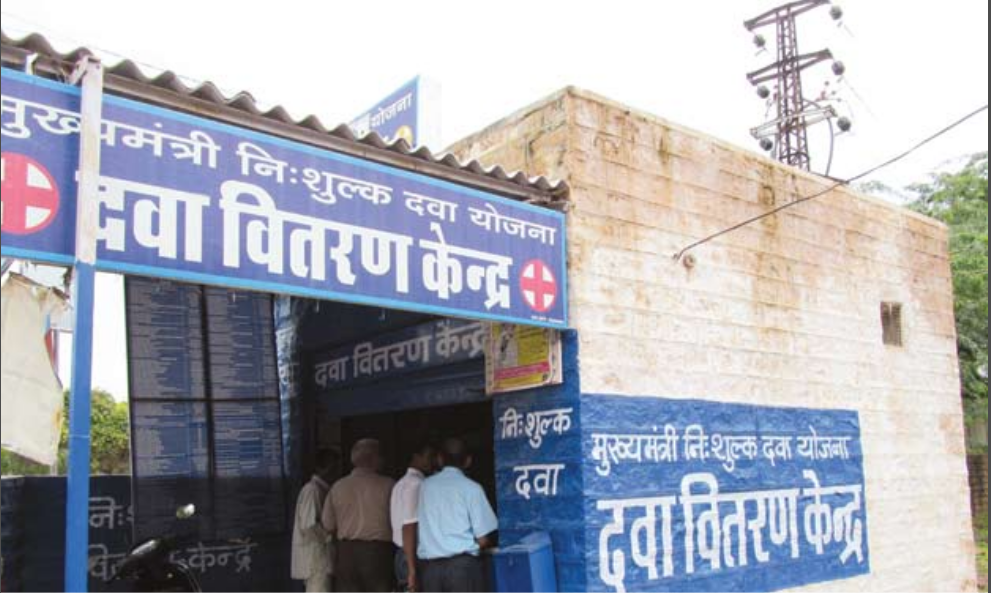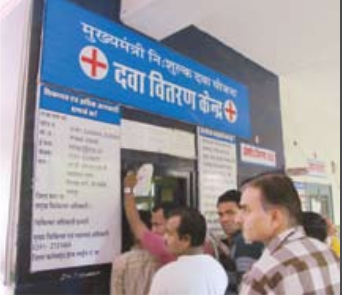Rajasthan Mukhyamantri Nishulk Dava Yojana And Strengthening Of Supply Chain Management System
Rajasthan Mukhyamantri Nishulk Dava Yojana And Strengthening Of Supply Chain Management System
Problem Statement
Rajasthan had its own Essential Drug List 2005 (now 2012 and revised 2013) and Standard Treatment Guidelines- STGs 2006 (now revised 2012) which are supposed to satisfy the priority healthcare needs of the population. These essential medicines and guidelines are selected with due regard to clinical protocols, disease prevalence, evidence on efficacy, safety and comparative cost-effectiveness. The medical practitioners are expected to abide by these guidelines, but still large gaps exist. In spite of such efforts, access to cost-effective, appropriate medicines and their rational use continued to be a challenge in Rajasthan. There remained large gaps in the processes of medicine procurement, quality-checking, distribution and pricing. Along with these shortcomings there were problems of inadequate, unkempt storage and lacunae in transportation facilities. In order to strengthen the drug supply chain management system and to provide free generic medicines MNDY was launched in 2011-2012.
Programme Description
The two major components introduced under this were:
- Free supply of generic medicines under Mukhyamantri Nishulk Dava Yogna.
- Strengthening of supply chain management.
- An autonomous centralised procurement agency Rajasthan Medical Service Corporation (RMSC) was established. The RMSC is responsible for the procurement of generic drugs and medicines, surgical and diagnostic equipment and their distribution to government medical institutions in the State of Rajasthan through the District Drug Warehouses.
- RMSC has also strengthened the process of quality control of drugs; ensured the availability of essential drugs at all times and promoted the rational use of drugs with special emphasis on the use of generic medicines.
- For each of its diverse functions, the Corporation has been organised into different cells with specific roles to play for the efficient functioning of RMSC.
- Before the inception of RMSC the District Drug Warehouses were functioning as stores for receiving all supplies from the central and State level and were under the administrative control of CM and HOS. These Drug Warehouses (27 locations) were provided with additional storage capacity of approximately 3000 sq. ft area and furnished with requisite equipment and infrastructure.
- e-Aushadhi a software for inventory management was launched. It is a web-based application which deals with inventory management of the stock of various drugs, sutures and surgical items at DDWs. The e-Aushadhi software utilises a propriety software. The software covers – Online Demand, Rate Contract Desk, Online PO Generation, Supplier Interface, Stock Ledger, Inter-DDW Transfer, Lab Interface, Quality Control, Supplier Performance Detail Report, NA Hit Report, Expiry Drugs Detail.
- An effort was made to bring about a change in the prescription behaviour of doctors by sensitising doctors about the usage of Essential Drug List and enforcing them to follow State STGs.
Programme Outcomes
- Increase in access and equity of the under served; and Reaching out to the unreached, Before – 44lakh patients/month, Later – 62 lakh patient per month.
- Source of Youth Employment.
- Increase in the numbers of Girl Child treated.
- Decrease in out-of-pocket expenditure.
- Reductionin retail sale of costly medicines-particularly anti-cancer, immunoglobulins, albumin, factors, sutures, rabies vaccines etc.
- Savings to Government
Financial Investment
| Fund | Amount(Rs. in crore) | Per capita expenditure |
|---|---|---|
| State Budget | 253.07 RS | 36.87 |
| NRHM | 24.83 RS | 3.61 |
| Total. | 277.9 Rs. | 40.48 |


Scalability
This scheme has been taken up by other States also for implementation.
Conclusions/Lessons Learnt
This scheme reduced the out-of-pocket expenditure of the patients and has helped effectively in meeting the needs of the patients. This scheme has resulted for in savings in government expenditure too.
Last Modified : 2/20/2020
This topic describes about massive Campaign of Co...
This topic describe about approach in the State t...
This topic describes to provide quality essential ...
This topic describes about Madhya Pradesh establis...
